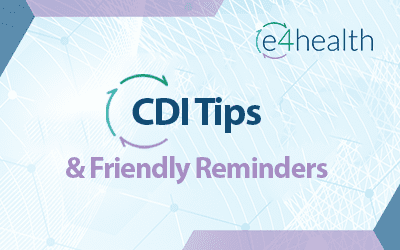Coding and CDI Tips
Sharing knowledge, experience, innovations and best practices to help organizations keep pace in the ever-changing healthcare industry
Coding and CDI Tips
Coding Corner Tips: Neobladder Formation Procedure
Neobladder Formation ProcedurePer 3Q 2024 Coding Clinic: Code Example A neobladder is formed using intestine that is still connected to its original vascular supply: A patient underwent laparoscopic radical cystectomy, along with formation of an orthotopic...
Coding Corner Tips for Prone Transpsoas (PTP) Interbody Fusion
Prone Transpsoas (PTP) Interbody FusionPer 3Q 2024 Coding Clinic: Code Example A patient presented for an L3-L4 anterior lumbar interbody fusion via lateral retroperitoneal transpsoas approach: The patient was placed in the prone position in anticipation of a...
Coding Corner Tips: Anorexia Nervosa
Anorexia NervosaNew Codes Implemented October 1, 2024: Code Assignment for Describing the Type & Severity of the Anorexia: Anorexia nervosa, restricting type: F50.010: mild; with a BMI greater than or equal to 17kg/m2 F50.011: moderate; with a BMI of 16.0-16.99...
CDI Tips & Friendly Reminders: Sepsis
SepsisSepsis: A clinical systemic, dysregulated host response to infection. It causes extensive inflammation throughout your body that can lead to organ failure and shock if not treated with early intervention. The term sepsis covers a broad group of conditions:...
Coding Corner Tips: Obesity Classes
Obesity ClassesNew Codes Implemented October 1, 2024: Code Assignment for Describing E66.81, Obesity class: E66.811, Obesity, class 1 (BMI of 30–34.9 kg/m², considered low risk) E66.812, Obesity, class 2 (BMI of 35–39.9 kg/m², considered moderate risk) E66.813,...
Coding Corner Tips: Bulimia Nervosa
Bulimia NervosaNew Codes Implemented October 1, 2024: Code Assignment for Describing the Severity of the Bulimia: F50.20, Bulimia nervosa, unspecified. F50.21, Bulimia nervosa, mild; with 1-3 episodes of inappropriate compensatory behavior per week. F50.22, Bulimia...

